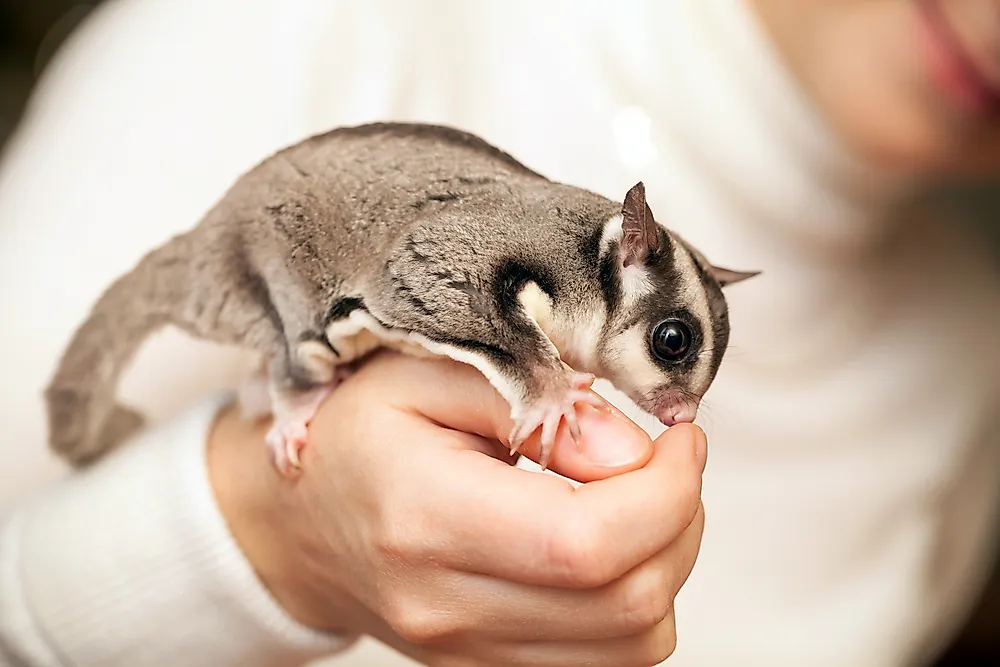Sugar Glider Facts - Animals of Oceania

Sugar gliders are sometimes referred to as flying squirrels. However, this is is wrong because they are not squirrels and they do not fly they glide. They move through the air by spreading their arms to expose the skin between the arms to catch the wind just like the Asian Draco lizard does. They are nocturnal marsupials, and their light gray color camouflages them at night from predators and prey.
4. Physical Description
The Sugar Glider is the smallest of the Petaurus gliders and it has a bushy tail and a small soft and furred possum. At first glance and before it spreads its arms, the sugar glider can be mistaken for a squirrel. It possesses a patagium, which is a thin furred membrane that stretches from the ankle to the wrist and looks like a wave line when folded. Their feet are shaped like hands and are used to grasp branches while their second and third toes are fused together. They have light gray bodies with a distinctive black stripe that runs from the rump to the nose on both sides of the face. Their life span is nine years in the wild and twelve in captivity. The longest lifespan recorded is 17.8 years.
3. Diet
Sugar gliders are adaptive omnivores who feed mainly on the lower layers of a canopy. Their primary source of water is rain, but they also obtain enough water from the food they eat. During the summer they feed on insects, and arthropods during the winter. On rare occasions, they are known to feed on eucalyptus sap, acacia gum, and honey dew. They use their teeth to strip bark to obtain sap. They are also known to be carnivorous and prey on lizards and small birds.
2. Habitat and Range
The sugar glider inhabits a large part of Papua New Guinea, Australia, Indonesia, and the nearby islands. They were introduced to Tasmania in the first third of the 19th century and they quickly spread the island. Their preferred environment includes rainforests, woodland, eucalyptus forests, and house gardens. They hunt during the night and spend the day in hollow dugouts lined with twigs. They have a small home range of about 1.5 hectares which is primarily due to an abundance of food. They are preyed upon by the owl, snakes, and feral cats.
1. Behavior
Sugar gliders avoid the forest floor when not looking for food to avoid being predated on. They instead move from one tree to another by gliding. They have perfected the art of gliding and can glide up to a distance of 50 meters. Sugar gliders are social animals and live in colonies that may comprise of up to eight adults and several young ones. Although some are solitary, they engage in group grooming which improves their hygiene. Females have two uteri and two ovaries and can go into heat within a year. They carry their young in pouches similar to those of kangaroos. Males reach maturity between 4 to 12 months and females reach maturity between 8 to 12 months.











